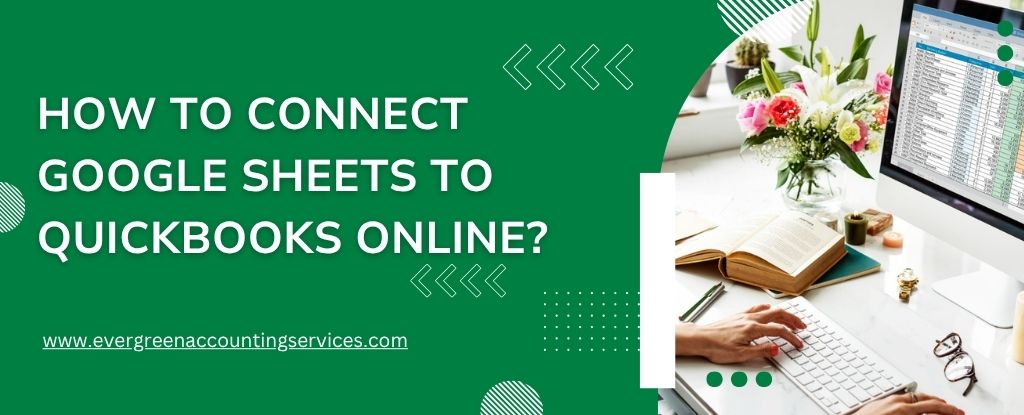Table of Contents
ToggleIn today’s fast-paced digital landscape, streamlining financial workflows is vital for businesses of all sizes. One powerful way to enhance efficiency is by connecting Google Sheets with QuickBooks Online (QBO). This integration allows for seamless data synchronization, real-time financial tracking, and the ability to create dynamic reports without manual entry. Below, we provide a comprehensive step-by-step guide to help you connect Google Sheets to QuickBooks Online effectively and securely.
Why Connect Google Sheets to QuickBooks Online?
Integrating Google Sheets with QuickBooks Online opens a new level of automation and control over financial data. Here are the core advantages:
- Real-time data synchronization
- Automated financial reporting
- Custom dashboards and analytics
- Reduction in manual data entry errors
- Greater collaboration across departments
Whether you’re tracking invoices, expenses, or payroll, this integration can drastically reduce the time spent on repetitive tasks and increase data accuracy.
Methods for Google Sheets and QuickBooks Online Integration
There are several ways to connect Google Sheets with QuickBooks Online. Below, we discuss the most effective options:
1. Using Google Sheets Add-ons (Recommended: Coupler.io or QuickBooks Connector)
Coupler.io and QuickBooks Connector (formerly Data Connector for QBO) are highly reliable tools for connecting Google Sheets with QBO.
Steps to Use Coupler.io
- Install Coupler.io from the Google Workspace Marketplace
- Open your Google Sheet.
- Click on Extensions > Add-ons > Get Add-ons.
- Search for “Coupler.io” and install it.
- Configure QuickBooks Integration
- Once installed, go to Extensions > Coupler.io > Open Dashboard.
- Select Add Importer and choose QuickBooks Online as the source.
- Log in with your QuickBooks Online credentials to authorize the connection.
- Set Up Import Settings
- Choose the data entity to import (e.g., Invoices, Customers, Payments).
- Select your preferred import frequency (manual or scheduled hourly/daily/weekly).
- Set destination sheet and data formatting options.
- Run and Automate Data Imports
- Click Run to import your data immediately.
- Enable automatic refresh to keep your Google Sheets up to date in real-time.
Why Choose Coupler.io?
- No coding required.
- Intuitive interface.
- Scheduled refresh and automation.
- Works with multiple QuickBooks Online entities.
2. Using Zapier for Automation Between Google Sheets and QBO
Zapier enables custom workflows called “Zaps” that can transfer data between apps automatically.
Steps to Set Up a Zap
- Create a Zapier Account
- Go to zapier.com and sign up.
- Select Trigger App
- Choose Google Sheets.
- Set a trigger like New Row Added.
- Select Action App
- Choose QuickBooks Online.
- Select action like Create Invoice, Add Customer, or Update Payment.
- Map Fields Between Google Sheets and QBO
- Match columns from Sheets to corresponding fields in QBO.
- Test the connection.
- Activate the Zap
- Once configured, turn on the Zap to start automating data transfer.
Limitations of Zapier
- Free plan has limited tasks per month.
- Slight learning curve for complex workflows.
- Less suited for real-time large dataset syncing.
3. Manual Export/Import (Not Recommended for Automation)
For small businesses or one-time data imports, you can use the export/import method.
Steps:
- Export data from QuickBooks Online as a .CSV file.
- Open Google Sheets and import the .CSV file.
- Format and manipulate data as needed.
While this is a quick method, it lacks real-time updates, data accuracy, and automation, making it unsuitable for long-term integration.
Best Practices for a Successful Integration
To ensure a smooth connection between Google Sheets and QuickBooks Online, follow these best practices:
1. Use Secure OAuth Connections
Always authorize apps via official OAuth protocols to ensure data safety and compliance with security standards.
2. Keep Your Data Structured
Maintain consistent column headers, naming conventions, and data types in your Sheets to avoid mapping errors.
3. Limit Permissions
Grant only necessary access when connecting third-party apps to protect sensitive financial data.
4. Test Before Scaling
Before applying automation on a full scale, run tests with sample data to ensure the correct mapping and sync behavior.
5. Monitor Sync Logs
Regularly review logs or error reports from tools like Coupler.io or Zapier to troubleshoot sync failures.
Use Cases for Integrating Google Sheets and QBO
The integration opens a wide range of use cases for finance teams, accountants, and business owners:
- Daily Sales Reporting: Auto-fetch invoice data to track daily or weekly sales in Sheets.
- Cash Flow Monitoring: Visualize cash inflows and outflows in a custom Google Sheets dashboard.
- Budget vs Actual Reports: Compare planned budgets with actual QuickBooks data using formulas and conditional formatting.
- Employee Reimbursements: Sync expense reports from Sheets into QBO for faster approval and processing.
Top Tools for Connecting Google Sheets to QuickBooks Online
| Tool | Best For | Pricing | Automation |
| Coupler.io | Scheduled data sync, no-code | Free & Paid Plans | Yes |
| Zapier | Trigger-based automation | Free & Paid Plans | Yes |
| Integromat (Make) | Complex multi-step workflows | Paid Plans Only | Yes |
| Manual Export | One-time data sync | Free | No |
Steps to Export QuickBooks Reports to Google Sheets
Follow these step-by-step instructions to quickly export data from QuickBooks Online Advanced to Google Sheets:
- Sign in to QuickBooks Online Advanced.
- Navigate to the Reports section.
(You can use the “Take me there” link for faster navigation.) - Open the report you want to export (e.g., Profit and Loss, Balance Sheet, or Sales Reports).
- Click on the Export ▼ dropdown, then select Export to Google Sheets.
- A verification code will be sent to your email or phone for identity confirmation.
- Enter the code and click Get started.
- Review the requested permissions from QuickBooks to Google.
- Select Allow to authorize the connection.
Once these steps are complete, your Google account will open, and you may be prompted to log in. After signing in, the system will link your QuickBooks Online data to your Google Sheets account, allowing the report to be exported successfully.
Tip: If you’ve verified your account previously, you can skip the verification step during future exports.
Troubleshooting Common Issues
1. Authorization Errors
Make sure your QuickBooks account allows API access and that you’re using admin credentials.
2. Data Mapping Failures
Check for mismatched field types (e.g., text in number fields). Ensure column headers match expected API fields.
3. Incomplete Imports
Limit your data query scope to avoid timeouts. If importing large datasets, segment data into smaller chunks.
Conclusion
Connecting Google Sheets and QuickBooks Online allows businesses to gain real-time visibility into their finances, enhance reporting, and reduce repetitive tasks. By using trusted tools like Coupler.io or Zapier, teams can set up powerful data sync pipelines in minutes—with no coding required.
This integration not only enhances operational efficiency but also empowers decision-makers with accurate, up-to-date insights. Whether you’re a startup, growing business, or established enterprise, bridging these platforms can unlock new levels of productivity and financial clarity.
FAQs: QuickBooks Online and Google Sheets Integration
Yes, QuickBooks Online allows users to export financial and accounting data directly into Google Sheets for further analysis and reporting.
Absolutely. You can import spreadsheets into QuickBooks Online to bring in various types of data, such as customer lists, invoices, and product details.
Yes, QuickBooks Online can be integrated with Google Workspace, enabling seamless data sharing and improved workflow between the two platforms.
You can automate invoice generation in QuickBooks Online using tools like Zapier or custom scripts, which trigger new invoices when new rows are added to a connected Google Sheet.
Yes, with the right integration setup, inventory level changes in Google Sheets can be synchronized with your QuickBooks Online account.
Yes, existing records in Google Sheets can be matched and synchronized with your QuickBooks Online data using third-party connectors or APIs.
If the integration fails, check your authentication settings, internet connection, and integration tool status. Reconnecting the apps or reaching out to support may resolve the issue.
Yes, you can generate dynamic financial reports in Google Sheets by pulling in data directly from QuickBooks Online using integrations or connectors.
The sync frequency depends on the integration tool you’re using. Some allow real-time syncing, while others offer hourly or daily updates.
Commonly supported data fields include customer details, invoices, expenses, product or service information, and inventory quantities.


